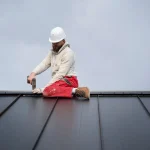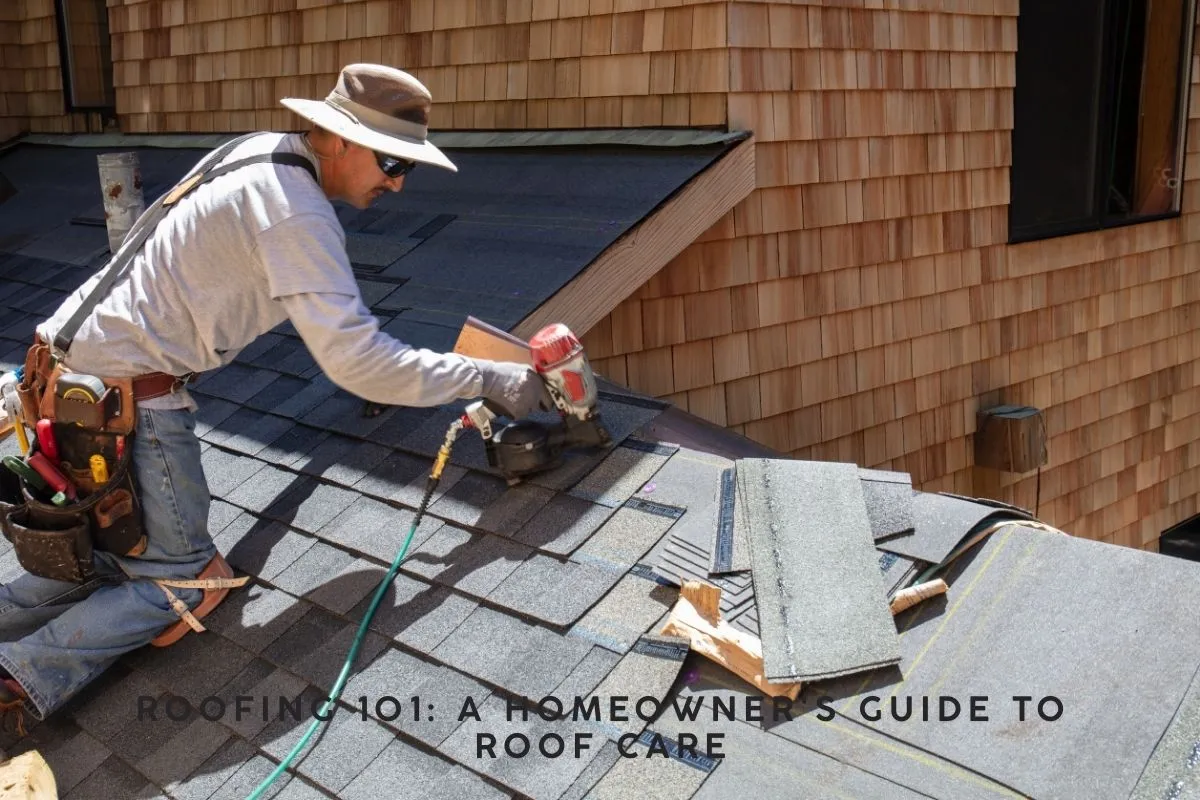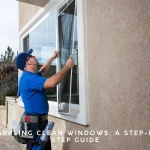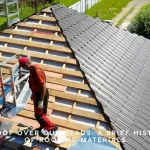When I bought my first home, I barely thought about the roof. I figured as long as it wasn’t leaking, it was doing its job. But after the first big storm hit, I noticed a few shingles out of place and water stains on the ceiling. It made me realize just how important proper roof care is for a home’s safety and energy efficiency. Like many first-time homeowners, I found myself asking: How can I make sure my roof stays in good shape?
A well-maintained roof can save you a lot of money in the long run. Not only does it protect your home from weather damage, but it also plays a key role in energy efficiency. In this guide, we’ll cover essential steps for roof maintenance, what to look out for, and when to call in professionals.
Table of Contents
ToggleWhy Roof Care Matters
Your roof is more than just a protective layer; it’s a crucial part of your home’s overall structure. According to Bob Vila, renowned TV host and contractor, “Your roof is your home’s first line of defense against the elements. Regular maintenance is crucial to its longevity and performance” (Bob Vila, TV Host and Contractor). Roofs are exposed to sun, wind, rain, and temperature changes, all of which can cause wear and tear. Regular maintenance can help prevent damage that could cost thousands of dollars in repairs down the road.
Understanding Roofing Materials and Their Maintenance
Different roofing materials have different lifespans and maintenance requirements. As Danny Lipford, a TV host and contractor, explains, “Understanding your roof’s material and its specific maintenance needs is essential for keeping it in top condition” (Danny Lipford, TV Host and Contractor).
Here are some common roofing materials and their basic care needs:
- Asphalt Shingles: These are affordable and common, lasting about 20–30 years. Look for cracks, curling, or missing shingles, which can indicate damage.
- Metal Roofs: Known for durability, metal roofs can last 40–70 years. Keep them clean and check for rust.
- Tile Roofs (Clay or Concrete): With proper care, these can last 50 years or more. Inspect for broken or slipped tiles after storms.
- Wood Shakes or Shingles: Wood roofs are beautiful but require regular cleaning and treatment to prevent moss, algae, and rot. They generally last about 20–40 years.
- Slate: Slate is a high-end material with a lifespan of 100 years or more. It’s low-maintenance but costly to repair, so regular inspections are essential.
Essential Roof Maintenance Tasks
While roofing might seem overwhelming, breaking down tasks into a seasonal checklist can make it easier. Here are the essentials to keep your roof in top shape.
1. Regular Inspections
Inspections help identify small issues before they turn into big, expensive problems. Chip Wade, an HGTV host, emphasizes the importance of inspections: “Regular roof inspections can help identify potential problems early on, preventing costly repairs down the road” (Chip Wade, HGTV Host). A good rule of thumb is to inspect your roof at least twice a year, ideally in the spring and fall.
During an inspection, look for:
- Missing or damaged shingles
- Cracks, blisters, or peeling on flat roofs
- Rust spots on metal roofs
- Loose or damaged flashing around vents and chimneys
- Buildup of debris like leaves, twigs, or moss
2. Cleaning Your Gutters
Clogged gutters can lead to water overflow, which can damage your roof and foundation. Hilary Farr, an interior designer, explains, “Don’t neglect your roof’s gutters and downspouts. Clogged gutters can lead to water damage, so keep them clean and free of debris” (Hilary Farr, Interior Designer). Clean gutters every few months, especially in autumn, to keep them functioning properly.
3. Checking for Leaks
Water stains on your ceiling are a telltale sign of a leak. Other signs include damp spots in the attic or peeling paint on walls. It’s vital to address leaks as soon as they appear, as they can lead to mold and structural damage.
4. Moss and Algae Removal
Moss and algae are common on shaded roofs but can lead to rot and decay if left unchecked. You can gently scrub affected areas or hire a professional for more stubborn growths. Avoid using pressure washers, as they can damage roofing materials.
5. Mind Your Attic
The attic plays a huge role in roof health. Proper ventilation prevents moisture buildup, which can lead to mold and rot. Check for blocked vents and insulation issues. Adequate ventilation can also reduce heating and cooling costs, as it helps regulate indoor temperatures.
The Role of Roofing in Energy Efficiency
Martha Stewart, a well-known businesswoman and home expert, notes, “A well-maintained roof can save you money on energy costs and prevent costly water damage” (Martha Stewart, American businesswoman, writer, and television personality). Insulated and well-maintained roofs help regulate temperature, keeping your home warm in winter and cool in summer.
Opting for energy-efficient materials, like cool roofs that reflect more sunlight, can help reduce cooling costs. Similarly, upgrading insulation in your attic can boost overall efficiency, as a study on building performance suggests (Building Envelope Performance Study).
Knowing When to Call the Professionals
While DIY can be tempting, certain roofing issues are best left to the pros. Mike Holmes, a Canadian contractor and TV personality, advises, “When it comes to roofing, don’t cut corners. Invest in quality materials and hire experienced professionals to ensure a durable and long-lasting roof” (Mike Holmes, TV personality and contractor).
Here are some cases where professional help is recommended:
- Storm Damage: High winds, hail, and storms can cause serious damage. After a major weather event, have a professional check for structural damage.
- Leaks: If you suspect a leak, call a roofer right away. Fixing leaks early prevents water damage to your home’s interior.
- Aging Roof: If your roof is nearing the end of its lifespan, an inspection can help you decide whether repairs are worth it or if it’s time for a replacement.
- Large Moss Growth: Removing moss on your own can damage shingles. A professional can remove it safely and apply treatments to prevent future growth.
Choosing the Right Roofing Materials
If you’re building or replacing a roof, materials make all the difference. Each has pros and cons, so consider factors like lifespan, appearance, and cost. Here’s a brief comparison:
- Asphalt Shingles: Affordable and versatile but may need replacement sooner than other materials.
- Metal Roofing: Long-lasting and recyclable, but can be expensive upfront.
- Tile Roofing: Beautiful and durable but heavy and requires a strong structure.
- Wood Shakes: Natural-looking but require regular maintenance and are more susceptible to fire.
- Slate: Extremely durable and elegant but costly and heavy.
Consider your local climate, too. For instance, metal roofs are ideal for areas with heavy snowfall, as they allow snow to slide off easily. Tile roofs, on the other hand, are more popular in warmer climates.
Building Codes and Safety Standards
Building codes ensure that roofs are safe and durable. According to a study on building codes (Building Codes and Standards Study), these regulations dictate materials and installation practices. Make sure your roofing materials comply with local codes, as this can affect your home’s insurance and resale value.
Roof Care in Severe Weather Conditions
Living in an area prone to severe weather requires extra roof care. A study on natural disasters highlights the economic impact of weather-related damage (Natural Disasters Impact Study). In these regions, invest in materials and professional inspections that ensure your roof can withstand strong winds, heavy rain, or snow.
Final Thoughts on Roof Care
Roof maintenance might seem like a lot of work, but it’s a worthwhile investment. Regular upkeep helps avoid costly repairs and keeps your home comfortable, safe, and efficient. Whether you’re cleaning your gutters, removing moss, or calling in professionals, each step contributes to the health and longevity of your roof. Following the tips above, you can protect your home and enjoy peace of mind, knowing your roof is ready for whatever weather comes your way.
Share via:
Related posts:
 First-Time Homebuyer’s Guide to Roofing: What You Need to Know
First-Time Homebuyer’s Guide to Roofing: What You Need to Know
 Don’t Get Soaked! Signs You Need a Roof Replacement
Don’t Get Soaked! Signs You Need a Roof Replacement
 Roof Leak Troubleshooting: Causes, Fixes, and Prevention
Roof Leak Troubleshooting: Causes, Fixes, and Prevention
 Beyond the Shingles: Unveiling the Hidden World of Roofing
Beyond the Shingles: Unveiling the Hidden World of Roofing
 Can a Deep Freezer Go in a Sun Room? Everything You Need to Know
Can a Deep Freezer Go in a Sun Room? Everything You Need to Know
 How to Hang a Wreath on a Glass Door: A Step-by-Step Guide
How to Hang a Wreath on a Glass Door: A Step-by-Step Guide
 How to Repair Mirror Desilvering
How to Repair Mirror Desilvering



